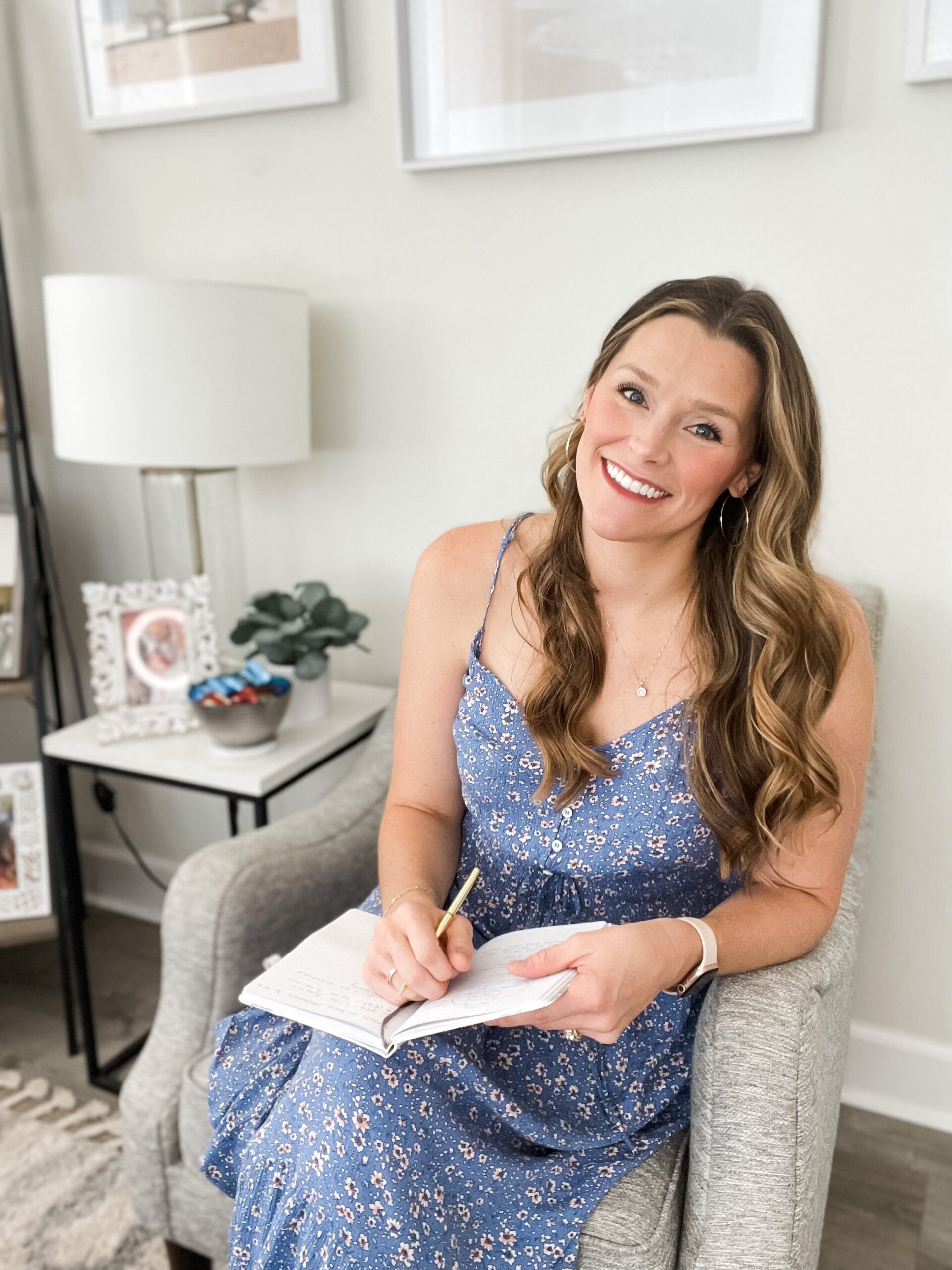© - Content and images in this blog are copyright Hannah Dorsher Coaching unless stated otherwise. Feel free to repost or share images for non-commercial purpose, but please make sure to link back to this website and its original post.
℗ - We do not store any information about your visit to our website other than for analytics and optimization for content and reading experience through the use of cookies.
℅ - Our site does at times contain paid advertisements, sponsored content, and/or affiliate links.
Reader Etiquette
Take the free attachment styles quiz.
Curious about your attachment style?
Browse by Category
Search the blog & press enter
I’M A LICENSED THERAPIST AND ATTACHMENT COACH HELPING WOMEN AND MOMS END THEIR UNHEALTHY RELATIONSHIP PATTERNS AND CREATE HEALTHY, GROUNDED, SECURE RELATIONSHIPS USING ATTACHMENT THEORY AND MY PSYCHOLOGY-BACKED PRACTICES.
Welcome to Hannah Dorsher Coaching
May 29, 2024
We all crave connection – that sense of safety, trust, and love that comes from feeling securely attached to our partners, children, and other important people in our lives. But for many of us, this longing is tainted by the invisible wounds of anxious attachment.
If you’re reading this, there’s a good chance you’re all too familiar with the knot in your stomach when your partner is distant, the fear of abandonment that creeps in during disagreements, or the desire to be constantly reassured that you are loved and cared for. These are all signs of an anxious attachment style – and they can wreak havoc on our relationships and inner peace.
How Attachment Wounds are Formed
The roots of anxious attachment often trace back to our childhood experiences. Maybe your needs weren’t consistently met, you endured childhood trauma, or your parents struggled with their own attachment wounds. Whatever the origins, you internalized beliefs of being unworthy of love, undeserving of having your needs met, or unimportant. And these core wounds continue to manifest in how you relate as an adult.
But there is hope! By understanding your attachment patterns and taking consistent steps to unravel the anxious tapes playing in your mind, you can absolutely heal your attachment wounds and create the secure, fulfilling relationships you deserve.
Understanding Your Attachment Style
Perhaps you’ve taken online quizzes to uncover your attachment style or read books on intimacy. Awareness is key! But insight alone isn’t enough; you must actively practice new ways of being. Let’s explore some powerful tools to transform your anxious attachment into a more secure style.
4 Steps Towards Healing Anxious Attachment Wounds
Step 1: Practice Self-Soothing
When rejection fears or abandonment anxiety strikes, your body goes into fight-or-flight mode, and it can feel like an emotionally dysregulated landslide. Often, it feels like the only way to calm down is by seeking reassurance from your partner.
While co-regulation (calming down with someone else’s help) can be effective, learning to self-soothe is critical for calming your nervous system so you can respond, not react, to intimacy challenges.
Put Self-Soothing into Practice:
Self-Soothing Touch: Place one hand on your heart and the other on your belly. Sync your breath to this gentle pressure, focusing on the rise and fall of your chest and belly as you inhale and exhale. This can be incredibly grounding, signaling safety to your body.
Create a Self-Soothing Toolkit: Gather items that help you feel calm and grounded, such as a favorite book to read aloud, soothing music, scented candles, and a journal for expressive writing. You can turn to your toolkit to comfort yourself when you feel your emotions rising.

Step 2: Boost Your Communication Skills
Effective communication is often challenging for those with anxious attachment. You might struggle to express your needs and feelings directly, fearing that you’ll come across as needy or burdensome. This fear can lead to reactivity and intense emotional responses, shutting down constructive conversations.
If this rings true, it’s time to upgrade your communication skills and express yourself more clearly and calmly. This will not only enhance your relationships but also help change your negative beliefs surrounding having and expressing needs.
Put Communication Skills into Practice:
Clear, vulnerable communication is the antidote to the misunderstandings and unmet needs that feed anxious attachment.
Use “I Statements”: Start using “I statements” like “I felt hurt when you canceled our date last night” rather than accusatory “You” statements that make partners defensive.
Avoid Blaming Language: Avoid blaming language to prevent defensiveness in your partner and keep the conversation constructive.
Take Timeouts: Take a timeout during heated moments to calm down before re-engaging. This can prevent unnecessary conflict.
Practice Active Listening: Summarize your partner’s words before responding to ensure you understand each other.

Step 3: Challenge Negative Beliefs
At the core of anxious attachment are deeply rooted negative beliefs like “I’m unlovable” or “I’ll eventually be abandoned.” These beliefs act like lenses, distorting how you experience intimacy. Until you learn to transform these beliefs, they will only serve to perpetuate anxiety, reduce self-esteem, and trigger negative interactions in your relationships.
Put Thought Transformation into Practice:
List Negative Beliefs: Write down your negative beliefs about yourself and your relationships, such as “I am too needy” or “Something is wrong with me.”
Create Replacement Thoughts: Replace each negative belief with a more balanced, positive thought. For example, replace “I’m too needy” with “I’m worthy of love and having my needs met.”
Practice Positive Affirmations: Reinforce these new beliefs through daily affirmation practice. It may feel silly, even untrue at first, but repeating positive statements like “I am lovable” can slowly reprogram those anxious tapes.

Step 4: Increase Self-Compassion
We anxious types tend to be incredibly hard on ourselves. All that internal criticism about being “too much,” “too sensitive,” or “too needy” just exacerbates attachment insecurity.
Approaching yourself with kindness and understanding, rather than self-criticism, is key to healing these attachment wounds caused by feelings often rooted in not feeling valued or seen in childhood.
Put Self-Compassion into Practice:
Talk to Your Younger Self: Look at a picture of your younger self and send her love. Tell the “younger you” three supportive things you needed to hear at that stage of life, such as “You matter” and “You are worthy of love.”
Start a Self-Compassion Journal: Record moments when you treated yourself with kindness, such as when you’ve said, “It’s okay to have needs” or “You’re doing the best you can” after a challenging day. Regularly review and reflect on these entries to cultivate a gentler, more supportive relationship with yourself.
As you embrace more self-compassion, you’ll find it easier to receive love from others.

Struggling with Anxious Attachment? You Can Move Towards a Secure Attachment Style!
The journey of healing attachment wounds can be tender and challenging, but you can create the secure love you deserve. I’m Hannah, and I help women like you heal anxious attachment so you can show up authentically in your most important relationships – with your partner, your kids, and yourself.
For Coaching: I have 1:1, group, retreats, and courses that you can be a part of in order to start your healing journey towards a secure attachment style. I focus on helping women and moms develop secure, healthy relationships with themselves, their partners, and their children!
For Therapy: If you’re in Colorado or Florida, I’d love to support you through this process of growth and transformation. Click here to schedule a free 15-minute therapy consultation call. Let’s explore if working together is the next step to help you heal.
ABOUT THE AUTHOR

Hannah Dorsher, MA, LPC, NCC, CAT, EMDR is a Therapist and Relationship & Attachment Coach in Fort Collins, CO who specializes in helping those struggling with anxiety, self-esteem, toxic/unhealthy relationships, anxious attachment issues, break ups, and trauma. I provide therapy with clients in CO and FL, and I provide attachment coaching for dating, marriage & motherhood to clients across the globe!! Schedule a free coaching consultation call with me here!
